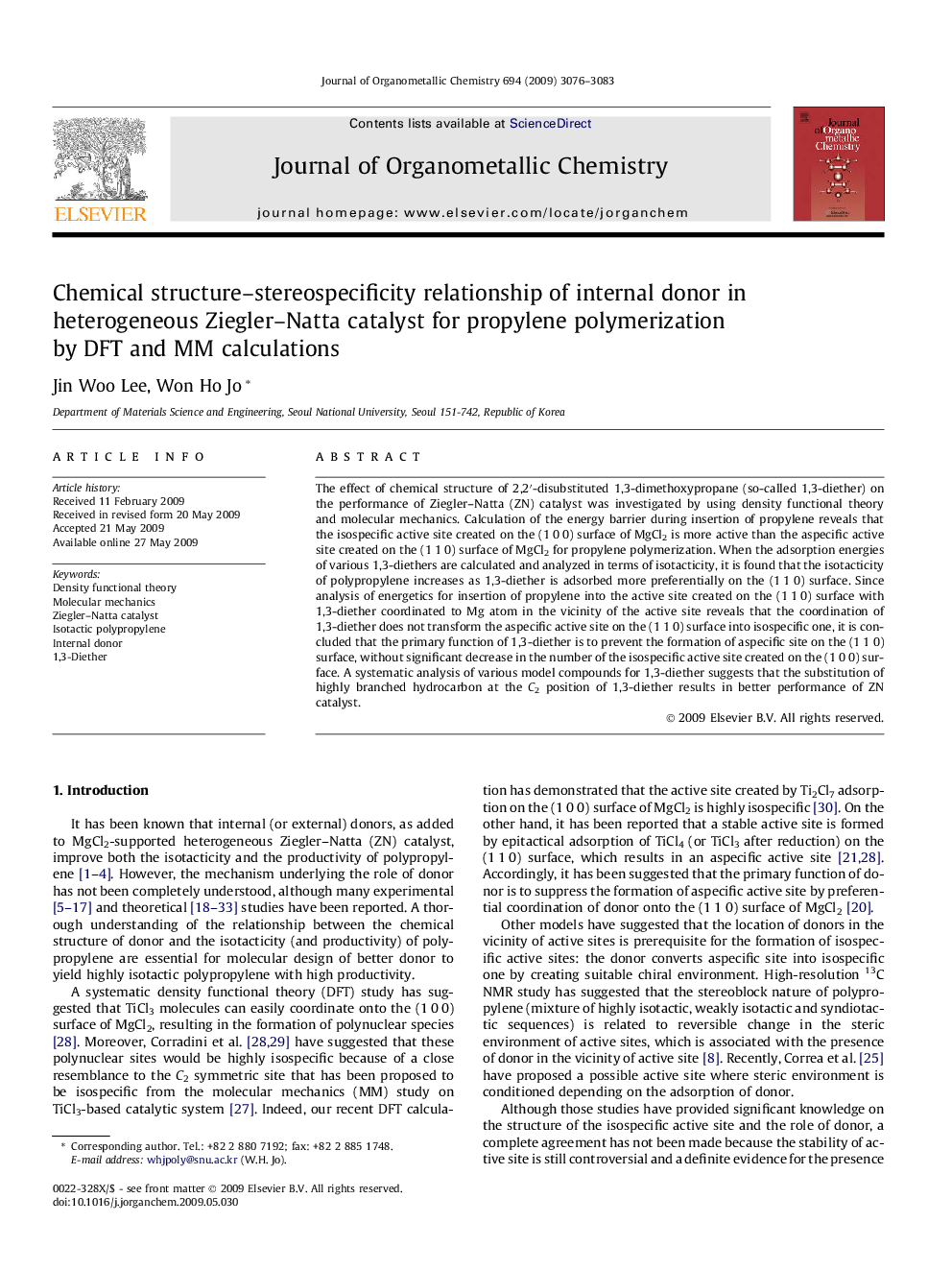| کد مقاله | کد نشریه | سال انتشار | مقاله انگلیسی | نسخه تمام متن |
|---|---|---|---|---|
| 1324484 | 977342 | 2009 | 8 صفحه PDF | دانلود رایگان |

The effect of chemical structure of 2,2′-disubstituted 1,3-dimethoxypropane (so-called 1,3-diether) on the performance of Ziegler–Natta (ZN) catalyst was investigated by using density functional theory and molecular mechanics. Calculation of the energy barrier during insertion of propylene reveals that the isospecific active site created on the (1 0 0) surface of MgCl2 is more active than the aspecific active site created on the (1 1 0) surface of MgCl2 for propylene polymerization. When the adsorption energies of various 1,3-diethers are calculated and analyzed in terms of isotacticity, it is found that the isotacticity of polypropylene increases as 1,3-diether is adsorbed more preferentially on the (1 1 0) surface. Since analysis of energetics for insertion of propylene into the active site created on the (1 1 0) surface with 1,3-diether coordinated to Mg atom in the vicinity of the active site reveals that the coordination of 1,3-diether does not transform the aspecific active site on the (1 1 0) surface into isospecific one, it is concluded that the primary function of 1,3-diether is to prevent the formation of aspecific site on the (1 1 0) surface, without significant decrease in the number of the isospecific active site created on the (1 0 0) surface. A systematic analysis of various model compounds for 1,3-diether suggests that the substitution of highly branched hydrocarbon at the C2 position of 1,3-diether results in better performance of ZN catalyst.
Theoretical investigation on the effect of 1,3-diether on the performance of Ziegler–Natta catalyst reveals that the primary function of 1,3-diether is to prevent the formation of aspecific site on the (1 1 0) surface, without significant decrease in the number of the isospecific active site created on the (1 0 0) surface.Figure optionsDownload as PowerPoint slide
Journal: Journal of Organometallic Chemistry - Volume 694, Issue 19, 1 September 2009, Pages 3076–3083